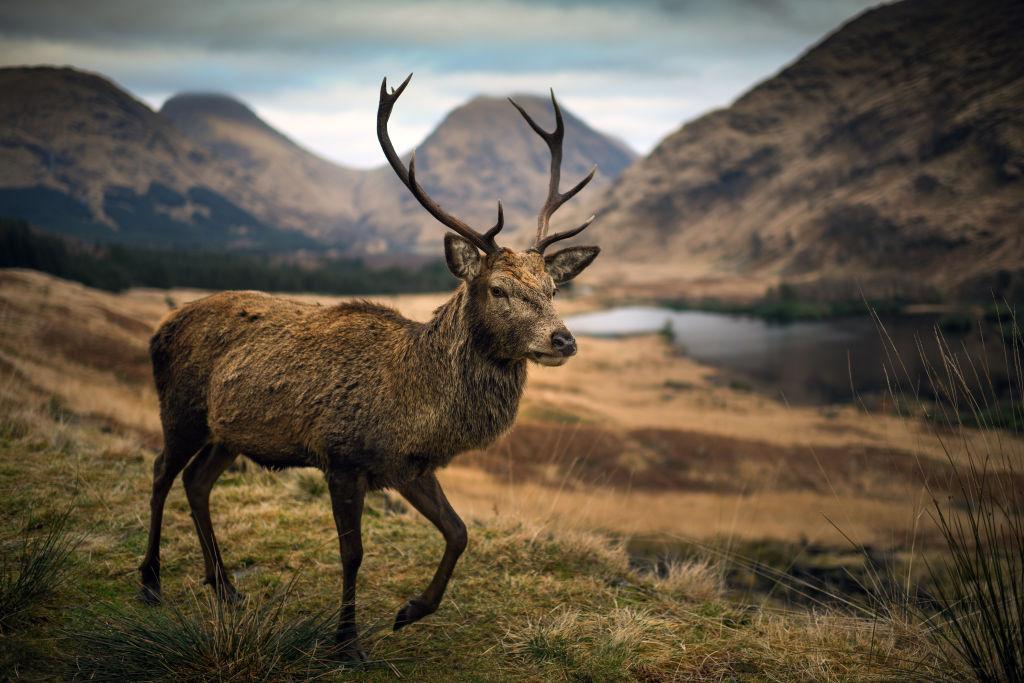A deer found dead weeks back in Yellowstone Park has been confirmed to have been infected with a “zombie” disease that has no known treatment.
“This is the first confirmed positive detection of the disease in Yellowstone National Park,” the NPS added.
The deer was captured by the Wyoming Game and Fish Department (WGFD) in March last year and fitted with a GPS collar as part of a study. The collar retrieved from the deer indicated that it died in mid-October this year. Samples from the carcass were collected for testing, which later indicated that the deer was infected with CWD.
CWD is a contagious, fatal disease “caused by a malformed protein (prion) for which there is no vaccine or known treatment,” NPS said. “The malformed prion protein accumulates in the brain and other tissues causing physiological and behavioral changes, emaciation, and death.”
“Signs of CWD include listlessness, weight loss, increased drinking and urinating, excessive drooling, and head lowering. It is transmitted by direct animal-to-animal contact or indirectly through contact with infectious particles persisting in the environment such as feces, soil, or vegetation.”
Since the mid-1980s, CWD has spread across Wyoming and is now found in most parts of the state. NPS advised people to notify authorities about any dead or sick wildlife in any part of the parks, and to avoid contact with dead or sickly animals. Some disease-causing organisms can be passed between wild animals and human beings, it warned.
“There is currently no evidence that CWD can infect humans or domestic animal species. However, it is recommended that tissues from CWD-infected animals not be consumed,” the NPS said.
There have been multiple infection cases in other states. In June, the Florida Fish and Wildlife Conservation Commission (FWC) confirmed that a road-killed deer had tested positive for CWD. This was the first case of the disease in Florida.
In July last year, a large-scale depopulation took place at a deer farm in Wisconsin after some animals were found to be infected with CWD.
Back in 2005, the disease struck New York after several deer escaped from their pen. An aggressive culling initiative by authorities led to the deaths of hundreds of deer, which eventually stopped the outbreak.
Infected Animals
According to the U.S. Centers for Disease Control and Prevention (CDC), there have been no reports of CWD infection among human beings. However, certain animal studies suggest that CWD infection risk exists for non-human primates like monkeys, which may eat animals infected with the disease or come in contact with them.Since 1997, the World Health Organization (WHO) has recommended that animals known to be agents of all “prion” diseases be kept away from the human food chain.
The CDC estimates that if CWD were to spread among human beings, “it would most likely be through eating of infected deer and elk.” A CDC survey from 2006-2007 had shown that almost 20 percent of surveyed Americans had hunted elks or deer, with over two-thirds admitting to consuming their meat.
The participants were followed over six years, with their deer meat consumption tracked during this time. The study, published in 2014, did not find any “significant changes in health conditions.”
“In areas where CWD is known to be present, CDC recommends that hunters strongly consider having those animals tested before eating the meat.”
Some of the signs of CWD among animals include excessive aggression and impaired coordination. Infected animals may also display a lack of fear of human beings, which would make them come out in the open more, making them vulnerable to hunters.
As of November, CWD in deer, elk, or moose have been reported in at least 31 U.S. states and three Canadian provinces, according to the CDC.
“It is possible that CWD may also occur in other states without strong animal surveillance systems, but that cases haven’t been detected yet. Once CWD is established in an area, the risk can remain for a long time in the environment. The affected areas are likely to continue to expand.”
Internationally, the disease has been reported in Finland, Sweden, Norway, and in South Korea. The infection has also been found in farmed elk and deer.
Nationwide, the overall incidence of CWD in free-ranging deer and elk is “relatively low,” the agency said. However, some regions may report infection rates in excess of 10 percent and even 25 percent. Among captive deer, the rates can be much higher.
At least one captive herd recorded an infection rate of 79 percent.







